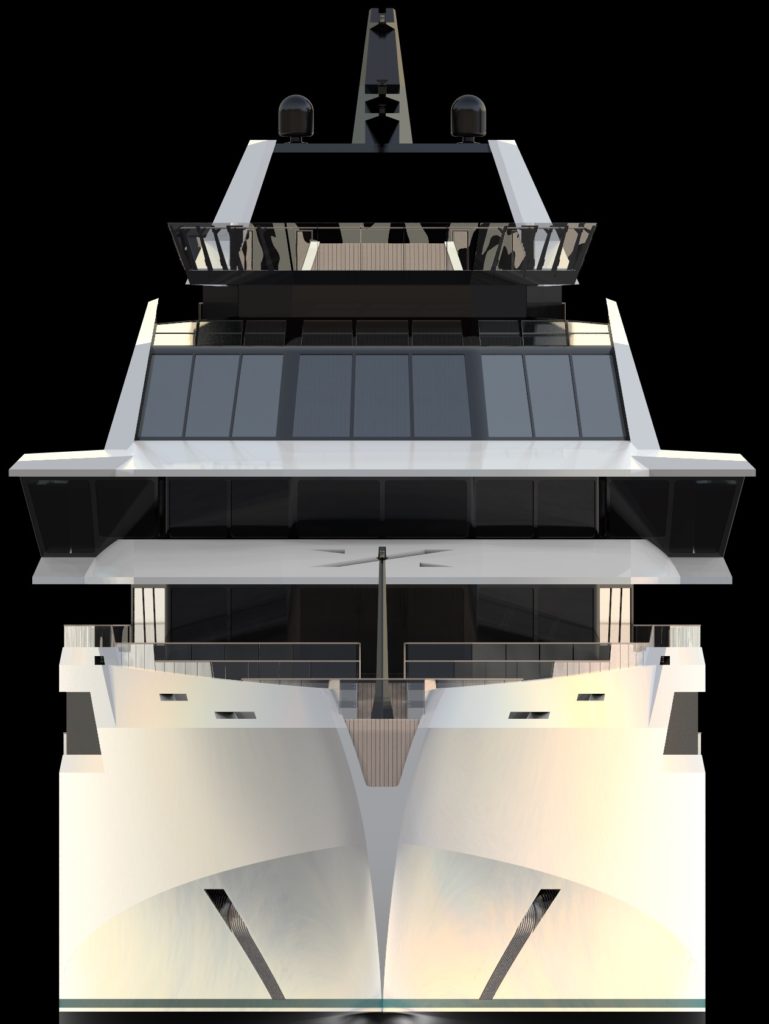Zero-emission cruise ships for UNESCO world heritage sites

Northern Xplorer AS has unveiled its zero-emission, luxury cruise concept, which will use fully electric propulsion, battery energy storage, hydrogen fuel cells and auxiliary wind and solar power.
Northern Xplorer has been developed in answer to new government regulations coming into force in Norway, which will make zero-emissions mandatory in the world heritage sites of Geirangerfjord and Nærøyfjord.

The current plan is for a series of 14 ships to use fully electric propulsion, battery energy storage, hydrogen fuel cells and auxiliary renewable energy supply (wind and solar power).
The first are intended to be operational from 2024/2025, well in advance of the 2026 zero-emission regulations affecting Norway’s world heritage fjords.
The manufacturer “aims to open the door to unique communities, natural attractions and experiences in the Nordic countries using advanced eco-friendly vessels”.
“Northern Xplorer will provide opportunities to travel ‘off the beaten track’, connecting passengers with unique locations in the Nordic countries in a personal way,” says company founder and CEO Rolf André Sandvik.
“NX sets a new course for sustainable cruising for thinking travellers, with future expansion providing a gateway to other European destinations both coastal and on navigable waterways inland,” says Sandvik.
“This will mean the end of polluting cruise ships sailing in what will be the world’s first zero-emission marine zones. Northern Xplorer provides the perfect zero-emission solution with a strong focus on local value creation and empowerment,” says Sandvik.
The Norwegian government regulations for zero-emissions around world heritage sites come into force from 2026.
Sophisticated HVAC systems will safeguard against pathogen spread while extensive use of recyclable materials will promote circularity. They will also feature advanced LADAR technology to detect marine plastic debris and raise awareness of maritime pollution. Built to the highest classification notations, all the vessels will be performance-optimised for superior energy efficiency and reduced fuel consumption.

“Low-impact discovery travel in smaller vessels is infinitely preferable to overcrowded ships and marquee destinations teeming with tourists.
“Somewhere between ocean and river cruising, it’s for those who want a more intimate on-board experience, to get insights into a new culture up close, and leave with the feeling their holidays have contributed positively to local communities and the planet,” says Sandvik [pictured left].
Sandvik has extensive experience with cruise lines NCL and Crystal Cruises. Latterly he founded travel company The Fjords, based in Flåm in western Norway, where as CEO he commissioned the hybrid electric vessels Vision of the Fjords (built 2016) and Future of the Fjords (built 2018). Each vessel can accommodate up to 400 passengers on noiseless, pollution-free journeys in the UNESCO-listed Nærøyfjord. Constructed by specialist Norwegian shipbuilder Brødrene Aa, both vessels won the Ship of the Year award during maritime trade fair SMM in Hamburg in their respective delivery years.











